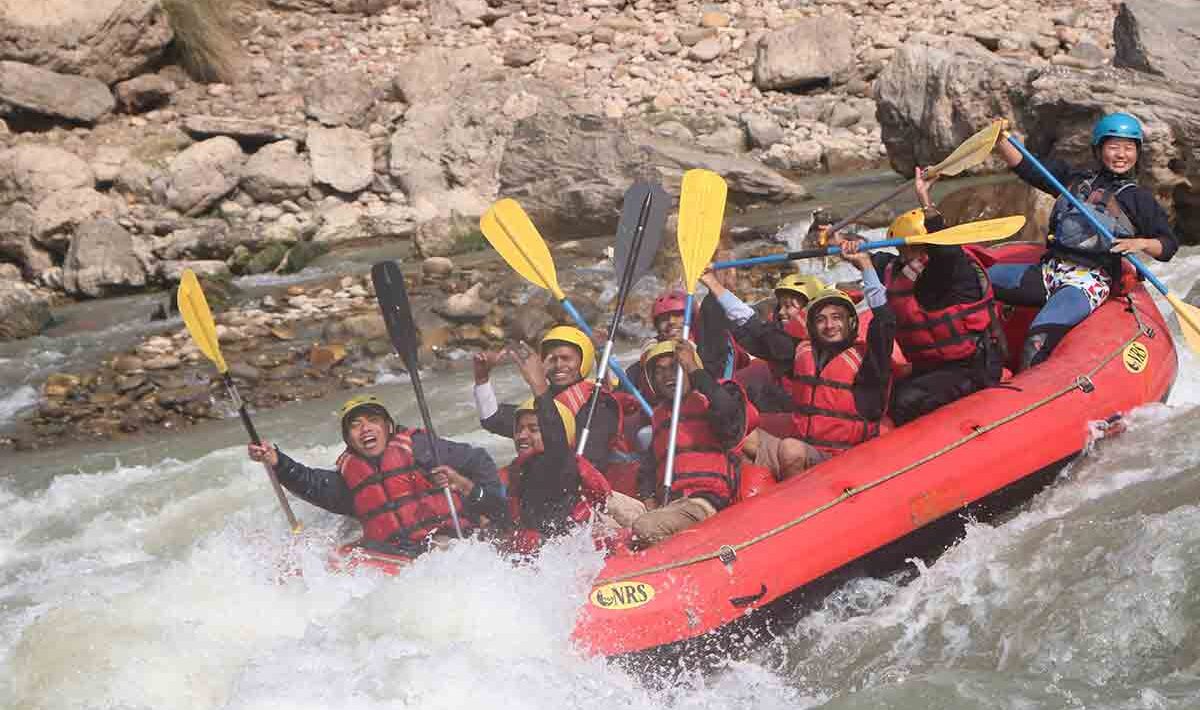It’s a question we get all the time: what’s the best time for Rafting in Nepal?
The answer is easy – all of them!
(Okay, three of them. Snowmen don’t paddle hard enough to make good rafting buddies.)
Spring, summer, and fall in Nepal, each bring fun and unique qualities and we love experiencing each of them from the river.
Seasons in Nepal
Winter: December, January, February
It’s difficult to do rafting on freezing water coming from the himalayas.
Spring: March, April, May.
It’s the perfect time for white water rafting in Nepal. During this time, the temperature increases and rafting could be one of the fun activities to beat the heat and welcome the summer.
Summer/Monsoon: June, July, August.
During this time, Nepal gets a lot of rain which increases the volume of water in all the rivers. Thus, it increases the speed and number of rapids.
Doing rafting during this time is high risk. Only the professional who wants to experience the high adrenaline rush in white water rafting should do it with the highest safety precautions.
Autumn: September, October, November.
It’s the perfect time for Rafting in Nepal. During this time of the year when the temperature remains moderate i.e. it is neither too hot nor too cold.
Though rafting can be done throughout the year in Nepal, the best seasons for rafting are September through mid-December and March through early May.
Some rivers can be rafted from late June through to August.
River Grades
- Easy: Moving water with occasional small rapids. Few or no obstacles.
- Moderate: Small Rapids with regular waves. Some maneuvering required but easy to navigate.
- Difficult: Rapids with irregular waves and hazards that need avoiding. More difficult maneuvering required but routes are normally obvious. Scouting from shore is occasionally required.
- Very Difficult: Large rapids that require careful maneuvering. Dangerous hazards. Scouting from shore is often necessary and rescue is difficult. Kayakers should be able to roll. Turbulent water and large irregular waves may flip rafts. In the event of a mishap, there is a significant risk of loss damage and/or injury.
- Extremely Difficult: Difficulties of class 5 carried out to the extreme of navigability. Might possibly (but not probably) be run by a team of experts at the right water level, in the right conditions with all possible safety precautions, but still with considerable hazard to life.

